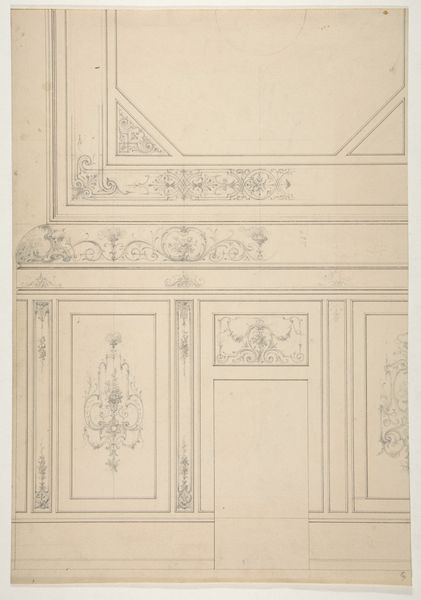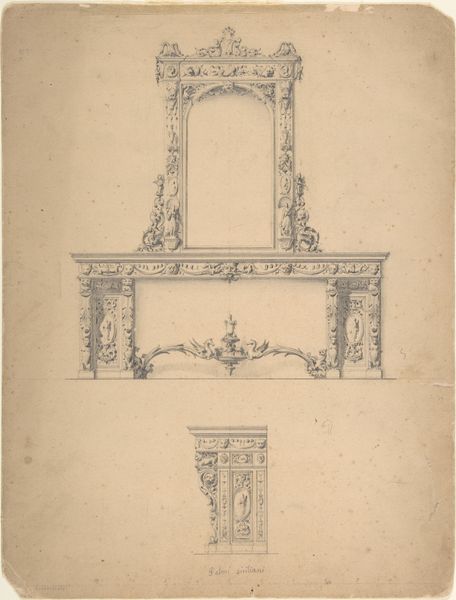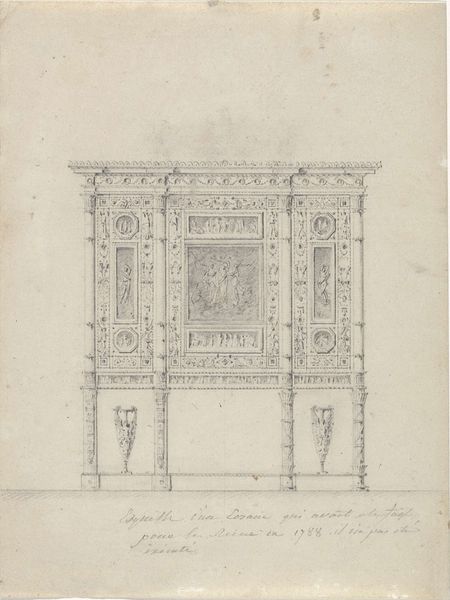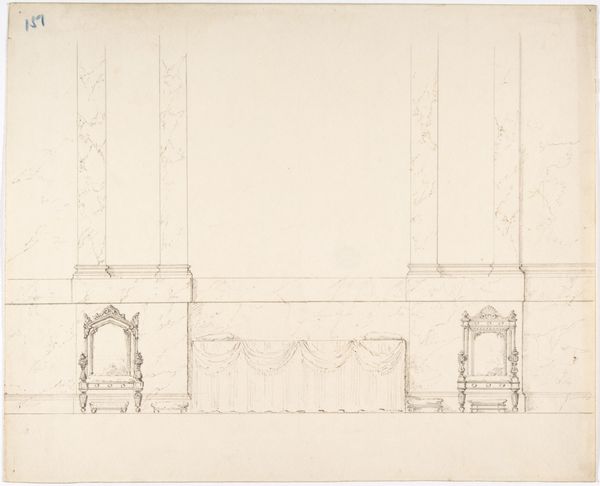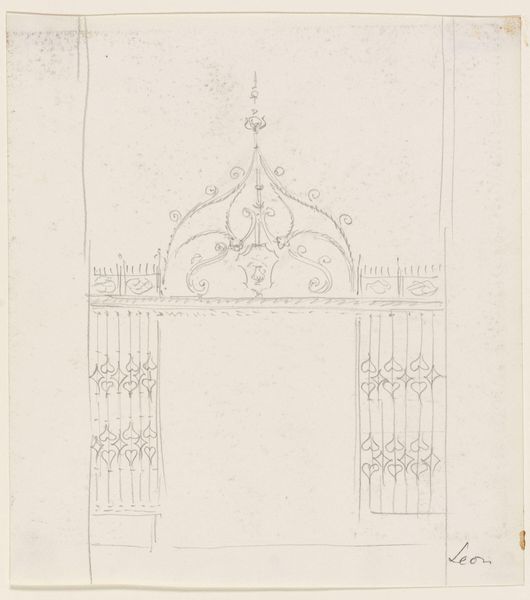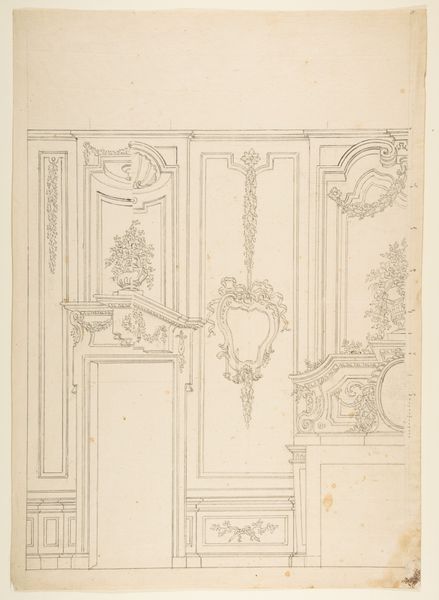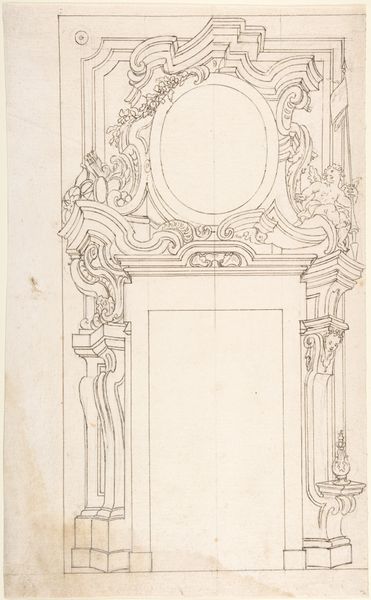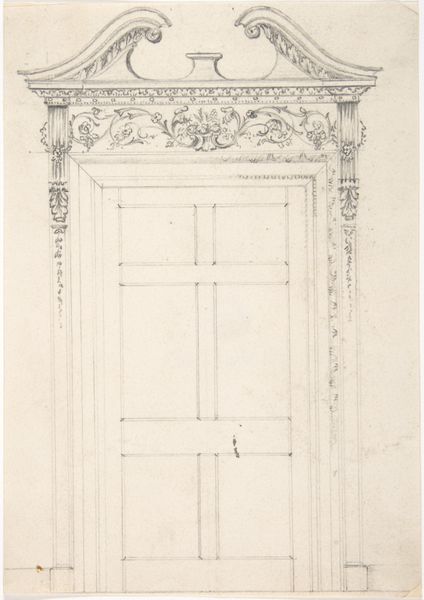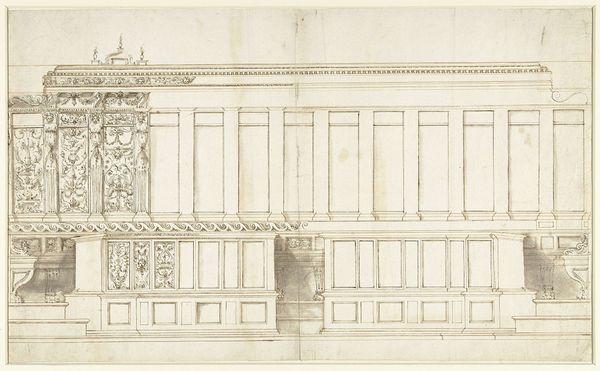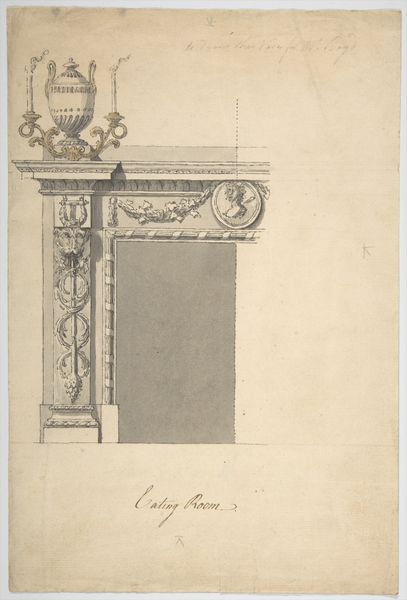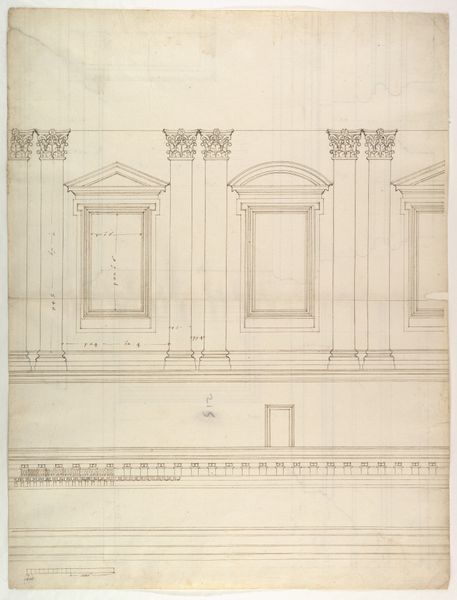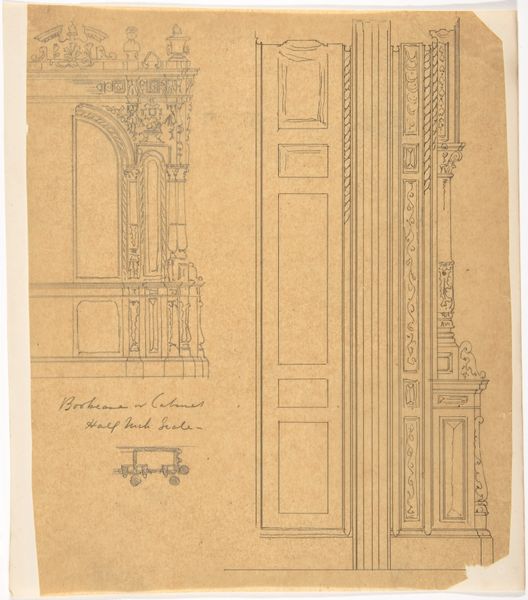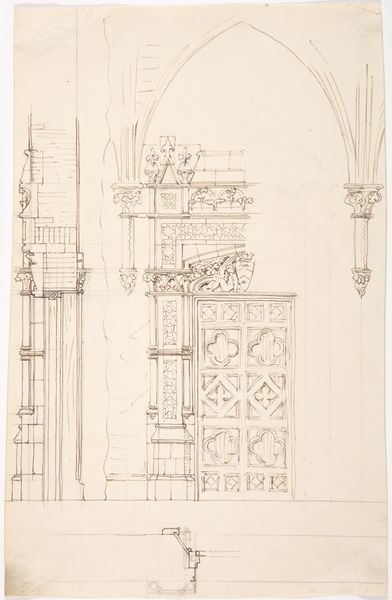
Elevation of a room with designs for the decoration of walls and wainscot 1830 - 1897
0:00
0:00
Dimensions: Overall: 11 3/16 x 8 3/8 in. (28.4 x 21.3 cm)
Copyright: Public Domain
Curator: This architectural study is entitled "Elevation of a room with designs for the decoration of walls and wainscot," created between 1830 and 1897. Editor: Immediately, the crisp lines evoke a sense of calm and order, that ornamented column centers my focus, flanked by that door. The unadorned door presents a striking contrast. Curator: Exactly! I see here neoclassical themes, rendered with decorative-art flourishes. Looking at the details, I immediately start to think about the designer, Jules-Edmond-Charles Lachaise, and wonder: what sociopolitical forces would necessitate a space to resemble the art of ancient times? Was this a design for a private salon or some manner of state space? Editor: These symbols speak to tradition and power. Those stylized acanthus leaves recall imperial Roman designs. It would be important to know which family or governmental entity might inhabit a space created in line with these designs, right? After all, symbols legitimize and convey ideals to the initiated. Curator: Absolutely. Neoclassical architecture and decorative motifs are visual shorthands for the aspirations to ideals of order, reason, and even democracy... although, as we know, those ideals weren't equally distributed in nineteenth-century society. The stark door could point towards social and physical mobility in the era. Editor: Yes, these refined ornaments project privilege and exclusivity. They represent access to material comforts. We see beauty codified here; but at what cost? Curator: Indeed. Perhaps spaces like the one designed by Lachaise inadvertently contributed to feelings of exclusion amongst those denied access to its beauty and perceived benefits. I’m interested in researching how the adoption of geometric forms also provided structure, control and conformity. Editor: Perhaps those crisp lines ultimately communicate ideas of authority and the need for rigid organization and class systems. I leave now pondering about whose identity or group belonging is deemed important when one beholds the visual ideals present in such a planned structure. Curator: It prompts thoughts on cultural aspirations and exclusions during a transformative era. Thanks for shedding light on that idea, It gave me a new perspective.
Comments
No comments
Be the first to comment and join the conversation on the ultimate creative platform.
